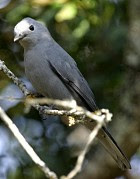Amon is currently employed at Bhejane Nature Training and shares of knowledge of local butterflies with all our students, who all get to go “butterflying with Amon” as part of their course schedules. This has also proved to be an excellent way to get them all interested in trees and plants! Apart from being a Butterfly Guide, he has also proven invaluable in being a mentor and coach to our sponsored students from local communities, and spends huge amounts of time with these students to bridge the language gap between isiZulu and English while training for their Level 1.
Amon is currently training towards FGASA Level 2 as well as Back-up Trails Guide. He will also soon start working on a project with the African Conservation Trust, to establish community sustained Butterfly Houses along a route in Zululand, to promote awareness and conservation of butterflies. He will get the opportunity to travel to many of the local communities to teach them about butterflies, guiding and conservation of our natural heritage.
Amon with one of his collections of samples representing some of the species found on the reserve.
 |
|
Amon with one of his collections of
samples representing some of the species found on the reserve.
|
Butterfly Guiding
 Guiding is a successful and developing career in South Africa. People come from countries all over the world to see our natural heritage, history and beauty of the country.
Guiding is a successful and developing career in South Africa. People come from countries all over the world to see our natural heritage, history and beauty of the country. Most people who visit Africa, are fascinated by seeing the diversity in the natural environment and wildlife. People are often interested to see the Big 5 and appreciate the guided experience for this, but if you cannot find the big five, it is not always easy for the guide – especially during the hot days.
As the guide, you must have lots of options for things to talk about during the guided experience. Bhejane Nature Training, which is situated in Northern Zululand is the first college to offer Butterfly Guiding to the students on their training course. This gives the guide an extra activity and things to share with the client through the guided experience.
As a guide, you can enhance your guest with an extra information on these beautiful creatures. Students are given the opportunity to be out in the field with Amon Ndlovu (Butterfly Guide) to explore, watch and learn about the beauty and importance of Butterflies, by catching and identifying the species that occurs in the area. We also do some collection and pinning to preserve the species.
The collecting of Butterflies plays an important role in the insect conservation. The Lepidopterist Society of Africa was established to study and conserve butterflies in SA.
Why the study of butterflies is so important?
 Like any other insects, butterflies are the most successful class of living animals. In Southern Africa there is about 660 species of Lepidoptera in nine families of butterflies with several subfamilies and their genus.
Like any other insects, butterflies are the most successful class of living animals. In Southern Africa there is about 660 species of Lepidoptera in nine families of butterflies with several subfamilies and their genus. Butterflies are so successful because they have the ability to fly and to disperse over wide areas to reach new habitats and food sources.
The development and adaptation of a social way of life, metamorphic life cycle, mouthparts and different stages into the life cycle enables them to exploit different sources of food which reduce competition between the adults and the young.
The ecological role of butterflies is very important in maintaining the balance in nature. They provide food for many small predators.
They also feed on different species of plant that helps with pollinating.
What is interesting about butterflies?
They are the most beautiful creatures in the natural environment. Butterflies are territorial when come to mating. The male will mark his area by advertising and displaying colors. The Dorianes (African Monarch) carry scent organs on their wings which excrete pheromones to induce the female to copulate (mating).Some butterflies are poisonous, like the Bandits (acrea) and display aposmatic colouration to warn predators that they are distasteful. Some species have cryptic deception or camouflage to avoid detection. Some species will even mimic the other species.
Some Lycanidae have a symbiotic relationship with ants. How? They lay eggs in an ants nest and when the larva hatched he will have the sweet substance which will attract the ants to control and take care of the larva by bringing him food which they regurgitate to his mouth. This relationship is called mutualism.
Climatic changes and food availability
 Must butterflies are controlled climate and the availability of food. Butterflies are ectothermic, they regulate their body heat through the external environment. If the climate is cold, they will move to warm places, but also depending on the food supply for them.
Must butterflies are controlled climate and the availability of food. Butterflies are ectothermic, they regulate their body heat through the external environment. If the climate is cold, they will move to warm places, but also depending on the food supply for them. Food plants is the most important source for butterflies. Even if the climatic conditions are favourable, without the food plant they will not stay.
Some species are even depending on a certain food plant (colitis auxo) feed only on Cadaba. Without that source of food they will all die and become extinct.
Butterflies are mainly dependend on the preservance of our biomes. Especially afromontane and riverine habitats are very important.
Bhejane Nature Training is involved in training, educating and encouraging local communities to become involved in nature conservation by teaching them the beauty, history and the importance of nature by giving them the Bush Skills and training them for FGASA Level 1- Creating Awareness through Wilderness.















